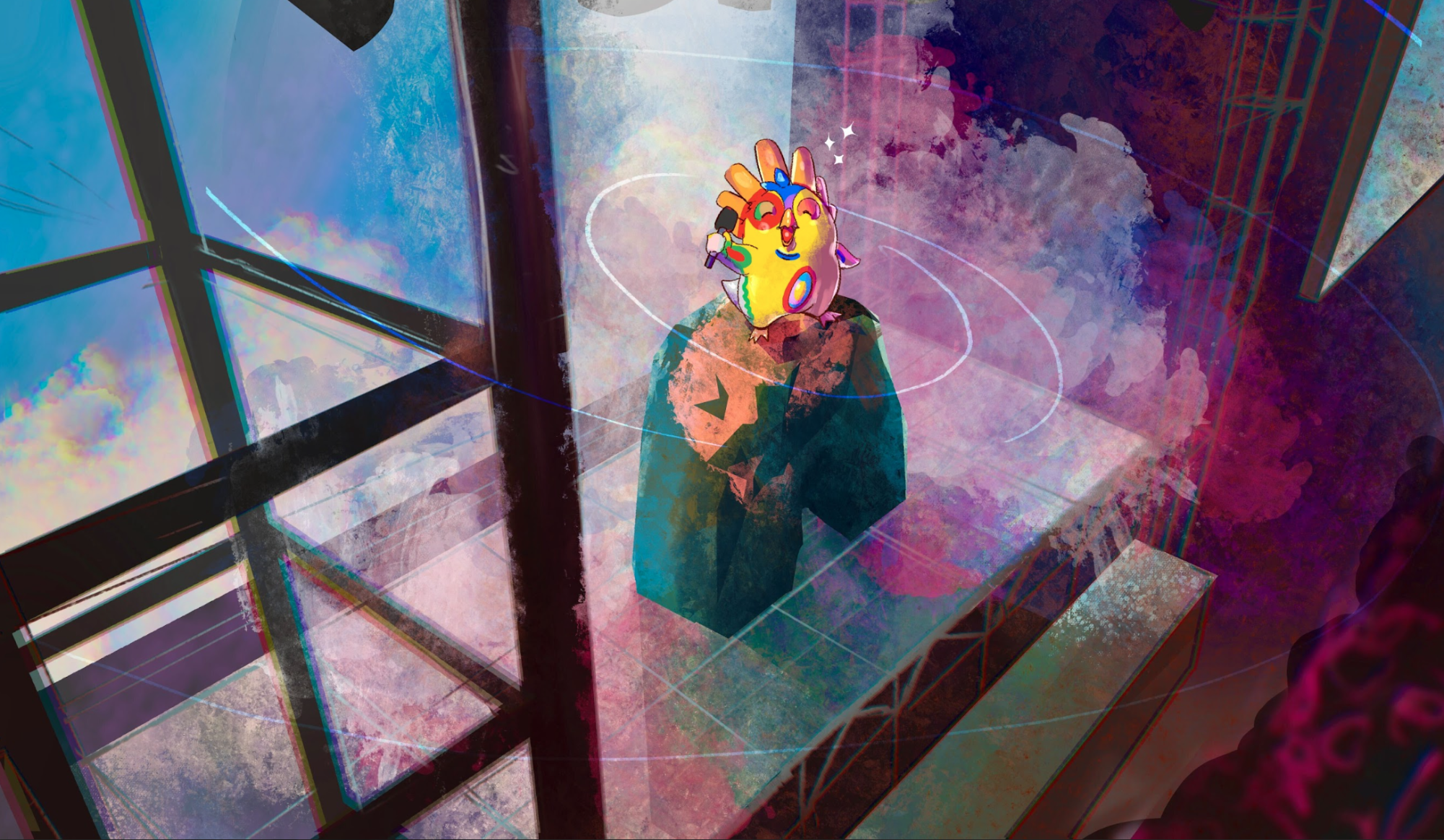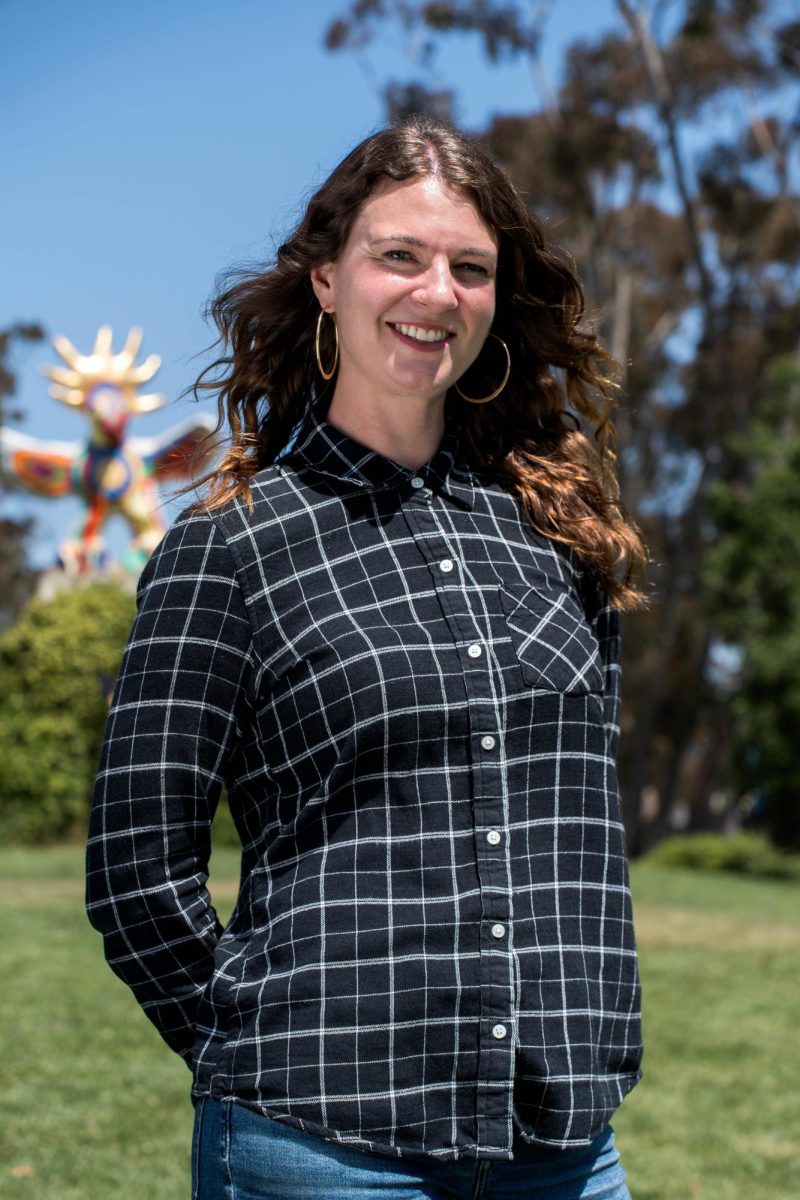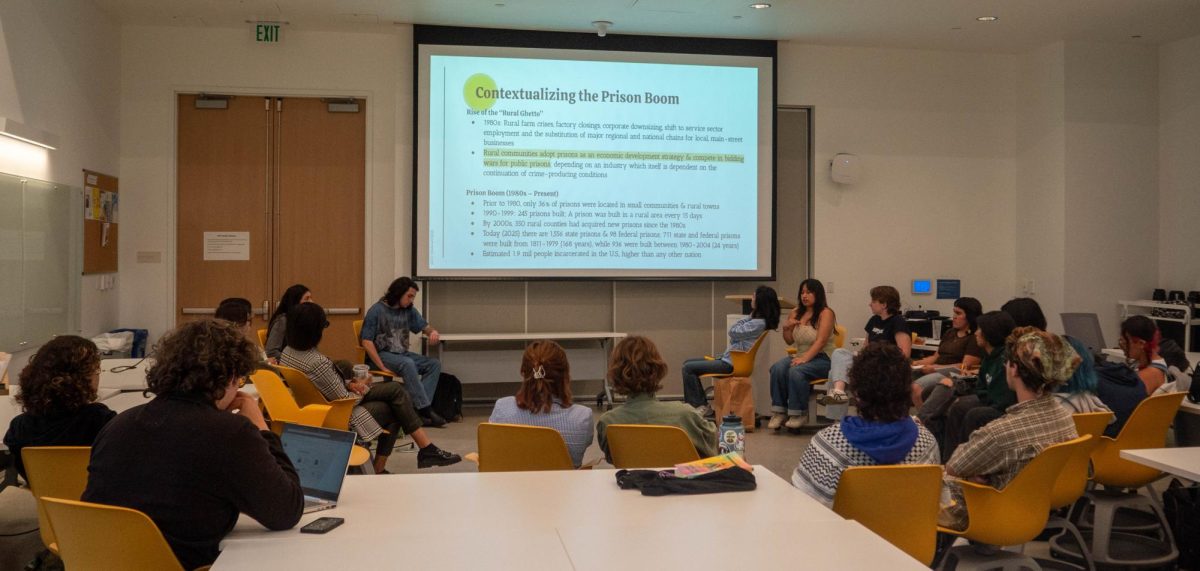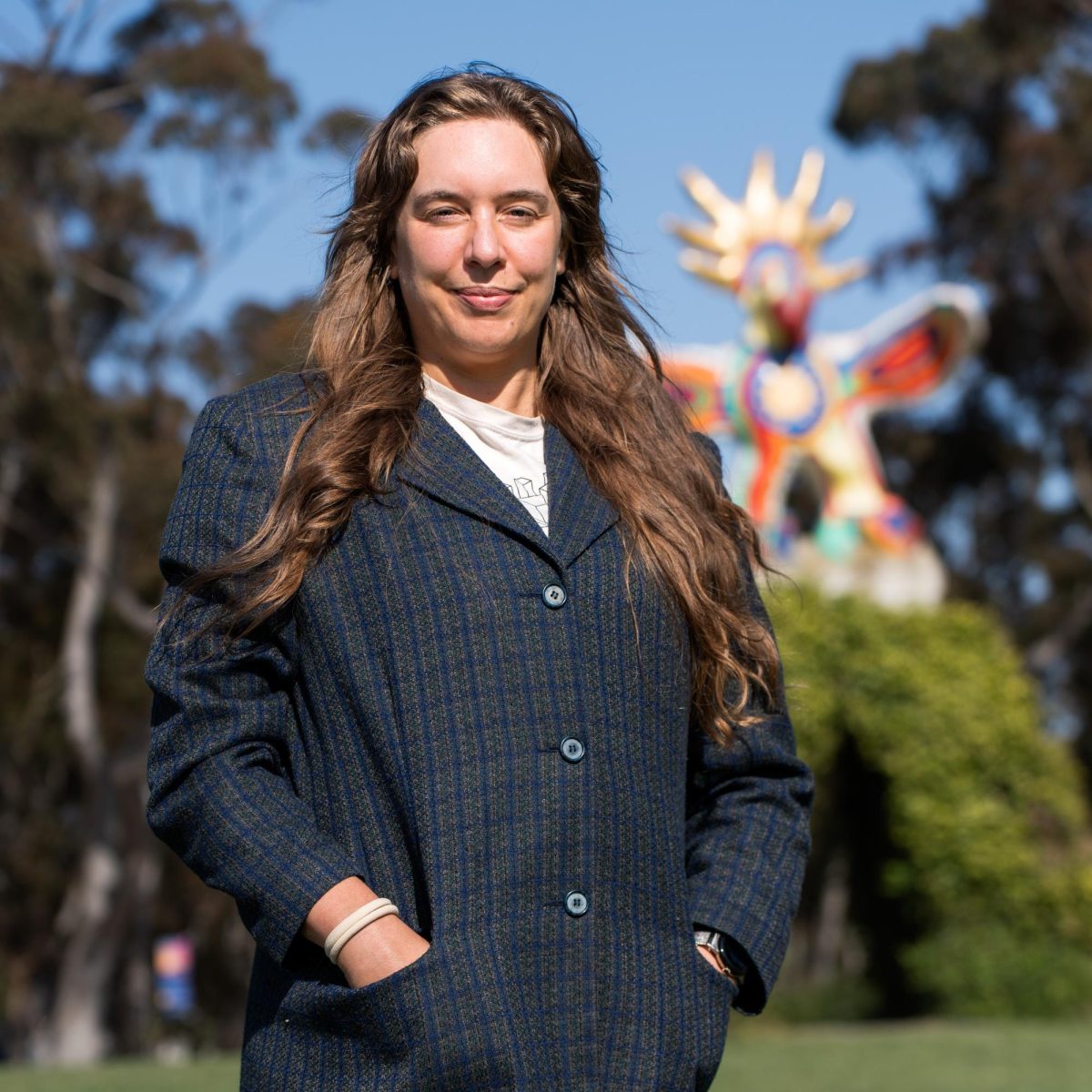The date is April 15, 2024. Four days prior, Associated Students at UC San Diego sent out teasers regarding who would be headlining the Sun God Festival. Suddenly, a banner drops from the second floor of Price Center. The banner, along with the date, time, and location of the festival, reads, “JPEGMAFIA.”
The American rapper and producer was the first announcement of the featured artists playing at Sun God. With this year’s lineup mixing different genres of music, the festival can appeal to a wide range of people. From the beginning of Sun God in 1984 to now, a number of different acts and music genres have been featured. With the addition of student performers and a more interactive way through which the student body can influence the music at Sun God, A.S. Concerts & Events hopes to continue introducing new elements to the festival.
The Sun God Festival was first created to honor the one-year anniversary of the Sun God statue’s installation on campus. During the first years of the festival, only one artist performed each year. By the time the popularity of the festival grew during the ’90s and early 2000s, more artists were featured in the lineup. Along with more “underground artists,” there were also big names like My Chemical Romance in 2006, Drake in 2010, and Kendrick Lamar in 2013. The hype surrounding these artists led to a massive turnout.
In 2011, UCSD reported a 20,000-person turnout at the festival. While publicity was at an all-time high, there were safety concerns surrounding public intoxication and drug use. Despite efforts from UCSD and ASCE to allocate most of the festival funding to security measures in years prior, a student passed away from a drug overdose in 2014. Whether this tragedy affected future lineups for the festival was up for speculation.
Nearing 2020, the artists consisted mainly of the lo-fi genre. Though 2020’s festival was canceled in the midst of the pandemic, ASCE created Sunny Days in 2021 to compensate for the loss. This was a virtual concert experience that lasted six days and allowed for a diverse set consisting of artists including Eric Nam, Chloe x Halle, and Omar Apollo.
Three years later, students were left with high expectations of a diverse setlist. Sixth College senior Nick Tchiprout, who experienced the set from last year, said that he wished for more alternative music. An audio engineer for the KSDT radio station on campus, Tchiprout expressed his hope for including more genres. With this years’ lineup, he is glad that the festival is “trying to diversify [the setlist].”
Tchiprout and other KSDT staff members expressed gratitude that JPEGMAFIA was invited to headline as he represents hip-hop and rap music, genres that have not been represented in the festival since before 2020.
Along with the main stage, student performers historically have been featured at the festival. They performed in numerous spots on RIMAC field, gaining attention from small crowds. As a part of the radio station that amplifies artists and DJs from UCSD, Tchiprout wishes that more attention would be given to those student talents. As the festival stood before, he remarked that it was “hard for students to be involved.” That includes both individual acts and also student organizations.
Chloe Keggen, a junior from Marshall College and programming director at KSDT, agrees with Tchiprout that student performers should be more involved. With student performers invited to a separate stage this year, Keggen and Tchiprout’s wishes might be granted. In response to this change, Keggen is glad that the festival will now be “more UCSD” and inclusive of direct student interests. Hopefully, in the future, the festival will reach out to more student organizations since organizers have been gradually responding to the feedback of the students.
Keggen, along with other staff members of KSDT, hopes that more attention will be placed on the main acts rather than the festival activities themselves. Other than the main stages, the Sun God festival also features carnival rides, booths with arts and crafts, a photo booth, and food vendors in order to appeal to students during the downtime between sets.
Another way to interact with the student population is through these arts and activities. Marshall College senior Carlos Leal expressed his opinion on how more arts-based student organizations could be involved.
“I know there are a lot of art clubs and collectives on campus that could [work] together and have a more nicely presented work,” Leal said.
Leal is a DJ at KSDT and thus understands how to present music to a variety of people. By nature, festivals like Sun God have the opportunity to cater to many different populations.
“They have a rapper. They have Fousheé, which is such a nice wild card,” Leal said. “I think the artists got a lot more exciting. It’s just a lot more exciting sounds.”
To Leal, compared to last year, this lineup speaks to more genres, and he feels that ASCE has responded to feedback from the students.
“I feel like this lineup is a lot wider-reaching in terms of people’s music tastes, more than two years ago,” he said. “I think this year we’re continuing the trend, and I really appreciate that,” he said.
Since Leal has an active role in the music scene at UCSD, being both a DJ and an audio intern for KSDT, he also appreciates the work going into highlighting student performers at the festival. This was one of the primary focuses of the ASCE team putting together Sun God.
Tom Rufino, a sophomore from Sixth College, is the festival director for this year’s Sun God. After helping to put together events like Horizon, where he was able to see up-and-coming student performers, he aimed to also bring them back to Sun God this year.
“I wanted to see them represented. I’m really happy that it came to fruition,” Rufino said. “Honestly, my personal favorite part of the festival is the student stage, being able to highlight and extend our talent showcase beyond the main stage with student performers that can bring amazing performances.”
Reflecting on the stage from last year, Rufino remarked that although it was a small step, the student performances last year were already an expansion from previous years.
“Before, we had performances last year, which was a great way to highlight them, but they weren’t given a specific spot where you could see them,” Rufino said. “I think the student stage has not been implemented into Sun God for at least 10 years. So I hope in the future the festivals department will keep the tradition.”
This tradition, which started many years ago with a performance from the Tritones, is one that this team is trying to bring back. Liz Wong, a festival coordinator and junior at Sixth College, reminisced about watching a YouTube video of the Tritones.
“I watched an old music video [from] Sun God, and saw the Tritones . . . with a bunch of student performers. [I thought] this looks so fun. I think Sun God has shifted a lot from what it used to be. I think the world is very different, too,” Wong said.
Just as the festival has changed since then, so has the team’s ability to listen to the student body and try to cater to their desires. Tom explained how they collect student opinions.
“It’s a Qualtrics form. So they answer questions about . . . their top three genres [they] want to bring to Sun God,” Rufino said. “It also factors in the experience elements too, like what rides and activations you want to see. We also use those as a metric of what to bring into the festival aspect too.”
ASCE’s budget is derived from the Student Activities Fee that students pay as a part of their tuition. With a portion of that money, they contact the agents of potential headliners; this money is called the lineup budget. The rest of the money goes to safety and security.
“The lineup is — you would think, a high priority, but when it comes to what the university’s expectations are for the festival, it’s pretty low priority,” Rufino said. “Health, safety, and security come as a much higher priority to the university, which is what we have to worry about.”
Since the team is limited by money, and also the restraints of artists’ schedules, it is difficult to appease all students. The team has a meeting where they consider all different ideas and take everything into consideration. For example, Rufino reflected on last year’s festival and what students did and did not like. After he saw the positive feedback from Knock2, he decided that a priority would be to bring in another EDM artist.
Beca Valeiras, another festival coordinator, explained that putting together a lineup can be challenging. As Valeiras was a student attendee of the festival last year before she was hired at ASCE, she understands both the student and the employee perspective.
“I attended [Sun God] as a student last year, and I remember being [excited] for the Ferris wheel and Smino. Now that I’m working [Sun God] . . . there’s so much that goes into it,” Valeiras said.
All three staff members on the team reflected on managing the expectations of the student body and those of the people close to them. If they are not able to secure a certain artist, they try to find someone similar within the same genre.
“Everybody has an opinion on it,” Valeiras said. “How they think it should be and what artists [we] should get. Before we joined this team, we didn’t know how everything worked, either. Now we understand how difficult it might [be] to get an artist.”
Even so, the team is satisfied with the work they have done and the festival they have taken the time to prepare for. As student feedback pours in next weekend — spanning from opinions on the activities to the diversity of the headliners — the team will be able to take it into consideration for next year. From KSDT and the bustling music scene on campus, they hope that there will continue to be a growing stage for student performers.
ASCE hopes that the festival will represent the work they put into organizing it, in addition to student feedback.
“We just came in with an open mind and a good vision for what we wanted to come out with, and I think we came out with something we were really proud of,” Rufino said.








